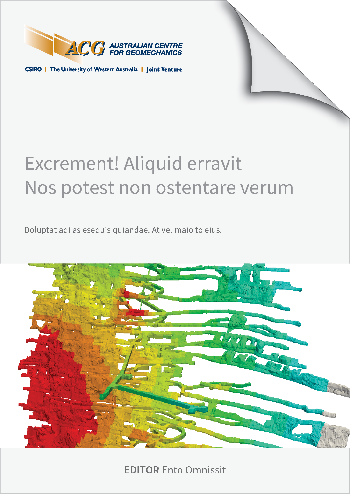Optimising multi nodal monitoring systems for enhanced understanding

|
Authors: Powlay, B; Karakus, M; Cox, D; Amrouch, K; Chester, C |
DOI https://doi.org/10.36487/ACG_repo/2435_C-03
Cite As:
Powlay, B, Karakus, M, Cox, D, Amrouch, K & Chester, C 2024, 'Optimising multi nodal monitoring systems for enhanced understanding', in Daniel Johansson & Håkan Schunnesson (eds), MassMin 2024: Proceedings of the International Conference & Exhibition on Mass Mining, Luleå University of Technology, Luleå, pp. 345-356, https://doi.org/10.36487/ACG_repo/2435_C-03
Abstract:
Hydraulic fracturing has become a widely employed technique in the mining industry to enhance resource recovery and viability as the demands for sustainable resources have increased. To ensure the safety and effectiveness it is essential to employ monitoring techniques that can effectively monitor fracture growth. A large sub-level caving copper mine in South Australia used hydraulic fracturing preconditioning to restart cave propagation and enhance resource recovery. This study investigates how various monitoring techniques, including tilt meters, seismic geophones, open holes, and strain gauges, can aid in mapping the growth and formation of fractures during hydraulic fracturing. This study outlines the distinct advantages of each of these monitoring techniques when it comes to capturing different aspects of the fracturing process as well as highlighting that no single technique can comprehensively map the complex dynamics of hydraulic fracturing. Tilt meters excel at detecting minute changes in surface tilt, which can be indicative of fracture growth. Seismic geophones are adept at detecting seismic events associated with fracturing and fluid movement, open holes allow direct observations of the subsurface conditions and fracture growth, while strain gauges measure insitu changes within the rock. In conclusion, this study emphasises the necessity of a multifaceted approach to monitoring hydraulic fracturing in mining operations. By combining multiple monitoring tools and various techniques, mining companies can achieve a more effective and safer preconditioning process while managing the trade-offs between real-time data and long-term trend analysis for optimised design and post-project analysis in sustainable resource recovery.
© Copyright 2025, Australian Centre for Geomechanics (ACG), The University of Western Australia. All rights reserved.
View copyright/legal information
Please direct any queries or error reports to repository-acg@uwa.edu.au
View copyright/legal information
Please direct any queries or error reports to repository-acg@uwa.edu.au